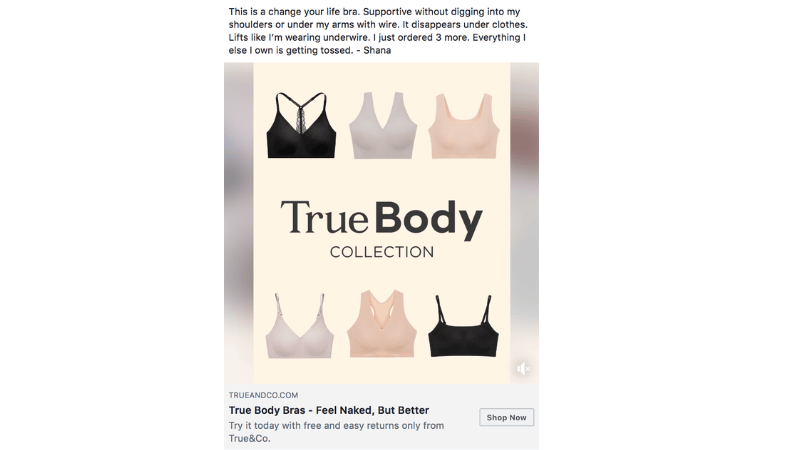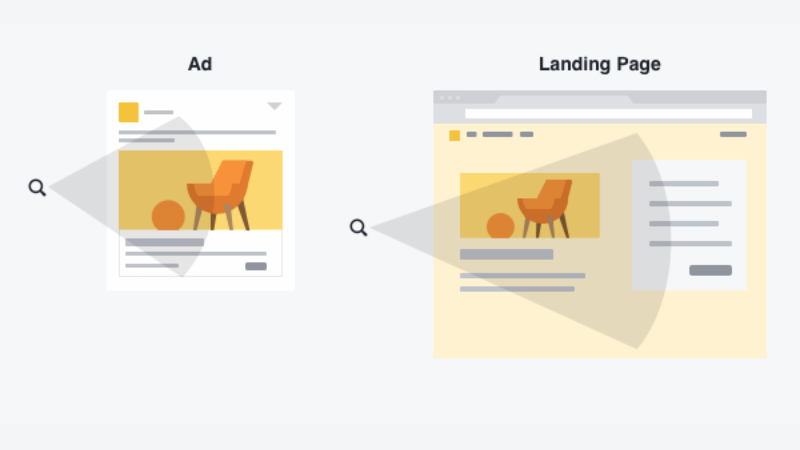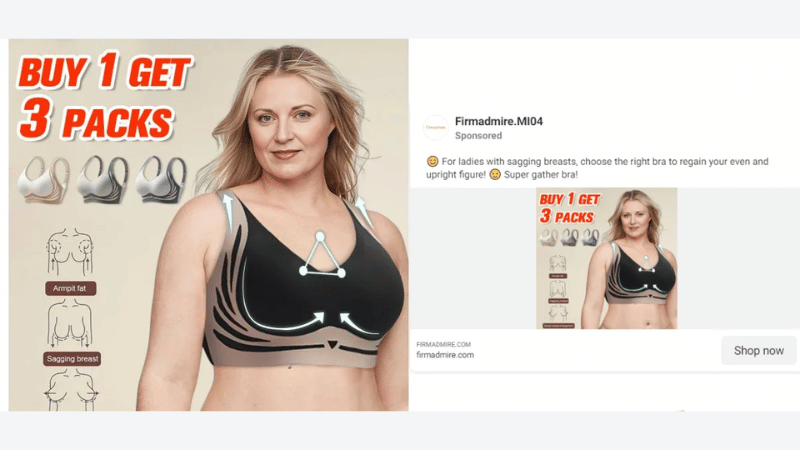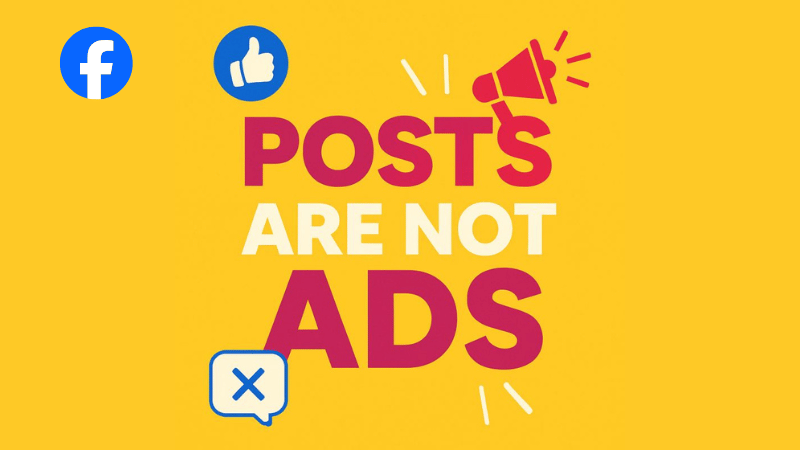Advertising bra ads on Facebook in compliance with platform regulations is one of the biggest challenges for many advertisers, as this product category is often considered sensitive and prone to violating community standards. To get your campaigns approved quickly and effectively, you must clearly understand Meta’s policies regarding visuals, language, and content presentation. In particular, choosing modest images, using neutral product descriptions, and avoiding overly suggestive elements will help your ads get approved more easily.
Which product category do bras fall under on Facebook?

Within Facebook’s content management system, bras are categorized under body-related and lingerie products. This is considered a sensitive group because it can be suggestive and may affect user experience if visuals or content are not properly controlled. Facebook allows bra ads, but they must ensure they are “non-sexualizing” and do not focus excessively on specific body parts. This means that the images used must focus on the product. For instance, close-up shots of the material, the design, or display on a mannequin instead of a real model in a suggestive pose.
Policies that often cause bra ads to be rejected
One of the common reasons bra ads are rejected is a violation of the “Adult Content” policy. Facebook uses an automated scanning system to identify images with sensitive elements such as excessive skin exposure, suggestive poses, or headlines containing provocative keywords. In addition, ads with phrases like “increase size,” “perfect lift,” or “sexy shaping” are also easily deemed violations because they imply body focus.
Another policy that many advertisers often forget is the regulation on “Body Image.” This restricts content that makes viewers feel insecure about their appearance. If an ad compares “before and after” wearing the bra or uses judgmental language about body shape, the ad can be rejected immediately. To avoid this situation, marketers need to thoroughly study Meta’s Advertising Policies.
Visual and linguistic elements to avoid when running ads
To run bra ads on Facebook correctly, the most important thing is to maintain aesthetics and subtlety in the presentation. For visuals, prioritize single product shots on a light background, avoid close-ups of body parts, or use real models wearing only a bra. If illustration is necessary, use sketches, graphics, or descriptive videos with an educational approach. For the content, focus on the product’s value, such as breathable material, posture-supportive design, and suitability for daily activities, rather than describing the wearer’s figure.
The wording needs to be natural, neutral, and should not emphasize sensuality or bold calls to action. Furthermore, avoid using continuous emojis, abbreviations, or punctuation marks, which the system may flag as spam content. When balancing promotional elements and policy compliance, the campaign will ensure quick approval while creating a positive brand impression. This is the key to helping businesses maintain bra ads on Facebook correctly and sustainably, and simultaneously build a professional image in the eyes of the customer.
Creative content and imagery for quick ad approval

To run bra ads on Facebook correctly, the most critical factor is how you build content and images to be both appealing and compliant with community standards. Facebook strictly reviews ads belonging to sensitive product groups, especially intimate apparel, so the creative strategy needs to be smart. Instead of focusing on the suggestive element, you should direct the content toward the product’s value, such as material, comfort, support capability, or design optimization for body shape. The goal is not to expose but to convey practical benefits, helping viewers feel confident and more likely to make a purchase decision.
Choose appropriate and safe model imagery

The visual aspect accounts for up to 70% of the possibility of getting bra ads on Facebook approved correctly. Model images should be carefully selected, ensuring natural poses, avoiding excessive exposure of the body, and focusing on sensitive areas. Priority should be given to images that convey sophistication, for example, a model wearing a light jacket, a side-angle shot, or a close-up detail of the material. Additionally, you can use flat lay product photos or photos on a mannequin to demonstrate professionalism and reduce the risk of being flagged as “adult content.” The more you avoid overly suggestive elements, the higher the chance of ad approval.
Write policy-compliant, non-suggestive ad copy
The caption or text within the image is also a point where Facebook’s review system is extremely sensitive. You should focus on describing the functionality, advantages, and user experience instead of describing appearance or bodily sensations. Instead of writing “enhance a sexy and alluring figure,” switch to “create a natural form, comfortable all day long.” Furthermore, avoid keywords related to the female body or strongly stimulating language. Maintain a professional, gentle tone aimed at a consultative style, helping the reader feel supported rather than “attacked” by the ad. A well-written, focused post will help the campaign achieve high effectiveness while complying with the platform’s regulations.
Notes on using video or carousel for bra ads
For formats like video or carousel, Facebook’s scrutiny is stricter because these are content types with moving visuals and multiple camera angles. When filming a video, pay attention to the camera angle being moderate, not zooming too close or panning over sensitive body areas. Instead, focus on the production process, introducing the fabric material, the design process, or genuine user feedback. With a carousel, arrange images in a clear sequence, with each frame demonstrating a different benefit such as elasticity, style, or color variety. Don’t forget to include a gentle CTA (Call to Action) like “Discover Now” or “Learn More” instead of insistent phrases like “Buy now to become alluring.”
Safe solutions when sensitive product ads are flagged for violation
In the field of online advertising, especially with sensitive items like intimate apparel, being flagged for policy violation by Facebook’s system is a frequent occurrence. Even if you have tried to comply with the policies, sometimes the automated algorithm can still misinterpret the content and block the ad. At this point, instead of panicking or continuously creating new accounts, you should apply safe, transparent solutions to both protect your ad assets and maintain long-term brand credibility.

Request a review for a blocked ad
When an ad is rejected, the first step is to carefully check the violation reason notification in Account Quality or Ads Manager. Typically, Facebook will specify the error, such as “violating adult content policy,” “using overly revealing imagery,” or “violating community standards.” If you believe your ad complies with the regulations, submit a review request. In the explanation section, clearly state the ad’s purpose, honestly describe the product, and emphasize educational or health benefits where appropriate. Using polite, professional language and submitting the request only once will help increase the chance of re-approval without creating a bad impression on the system.
Common errors that cause ads to be flagged for violation
Many advertisers make errors that seem minor but are enough to cause the system Facebook ads to flag them. One of the most common errors is using images with a high degree of exposure or camera angles that focus on sensitive body areas, leading the algorithm to classify the content as suggestive. Furthermore, using words like “sexy,” “hot,” “increase allure,” or highly stimulating language is also on the restricted list. Other cases include links leading to a website containing unoptimized images or model elements that do not comply with the policy. The solution is to always choose natural, well-lit images that feature the product primarily rather than the model’s body; simultaneously, review all content to ensure no violation of any Meta terms.
Maintain a stable and credible ad account
To limit long-term risk, you need to build a sustainable ad account. First, fully verify your business information, including your website, Fanpage, and primary domain. Running small, safe test campaigns before launching a large campaign also helps the system deem your account trustworthy. Additionally, you should regularly check Account Quality to address warnings early and avoid mass blocking.
Do not frequently change payment methods or administrators, as this can lead the algorithm to suspect unusual activity. By maintaining a stable ad account, you not only avoid sudden account suspension but also create a solid foundation for subsequent campaigns, especially for sensitive products that require a high level of review.
Frequently Asked Questions
Even if the image is not revealing, Facebook’s AI system can still assess the context and skin tone. You need to reduce contrast, choose neutral camera angles, and avoid suggestive descriptions.
Yes. Video is scanned more intensely, especially for body movement. Use static shots, emphasize the product, and do not zoom in on the body.